This article is also available in Spanish.
Bitcoin’s price pullback from a novel record high of $108,353 on Tuesday to around $96,000 (an 11.5% pullback) has sparked intense speculation about whether the current bull cycle is nearing its peak. To address the growing uncertainty, Rafael Schultze-Kraft, co-founder of analytics provider Glassnode, released a thread on X detailing the 18 indicators and models on the chain. “Where is the TOP of Bitcoin?” Schultze-Kraft asked before presenting his detailed analysis.
Has Bitcoin reached a cycle peak?
1/ MVRV Ratio: A long-term measure of unrealized profitability, the MVRV ratio compares market value to realized value. Historically, readings above 7 signaled overheating. “It’s currently hovering around 3 – room to grow,” Schultze-Kraft noted. This suggests that in terms of aggregate unrealized profit, the market has not yet reached levels that previously coincided with macro peaks.
2/ MVRV Price Ranges: These ranges are derived from the number of days that MVRV has spent at extreme levels. Historically, the upper band (3.2) has only been breached on about 6% of trading days. Today, that top of the range equates to a price tag of $127,000. With Bitcoin trading at around $98,000, the market has not yet reached the zone that has historically marked the highest formations.
3/ Long-Term Holder Profitability (Relative Unrealized Profit and LTH-NUPL): Long-Term Holders (LTH) are considered to be more stable market participants. Their net unrealized profit/loss (NUPL) ratio is currently 0.75, entering what Schultze-Kraft calls the “euphoria zone.” He noted that Bitcoin has traded another ~3 times in the 2021 cycle after reaching similar levels (though he clarified that he doesn’t necessarily expect a repeat). Historical upper formations have often recorded LTH-NUPL readings above 0.9. So while the rate is elevated, it has not yet reached the extremes of the previous cycle.
It’s worth noting that Schultze-Kraft admitted that his observations may be conservative as the 2021 cycle peaked at slightly lower yield values than previous cycles. “I would expect these profitability metrics to be a little bit higher,” he explained. This may signal a decrease in peak values in subsequent cycles. Investors should be aware that historical extremes may become less pronounced over time.
4/ Annual Realized Gain/Loss Ratio: This ratio measures the total realized gains against realized losses over the past year. The peak values of previous cycles exceeded 700%. Currently at around 580%, it still shows “room to grow” before reaching levels historically associated with market highs.
5/ Market Cap to Thermocap Ratio: An early on-chain indicator that compares Bitcoin’s total market cap to its cumulative mining cost (Thermocap). In previous booms, the extreme values of the indicator coincided with the highest market values. Schultze-Kraft advises caution with specific target ranges, but notes that current levels are nowhere near previous extremes. The market remains below historical thermocap multiples that have indicated overheating in the past.
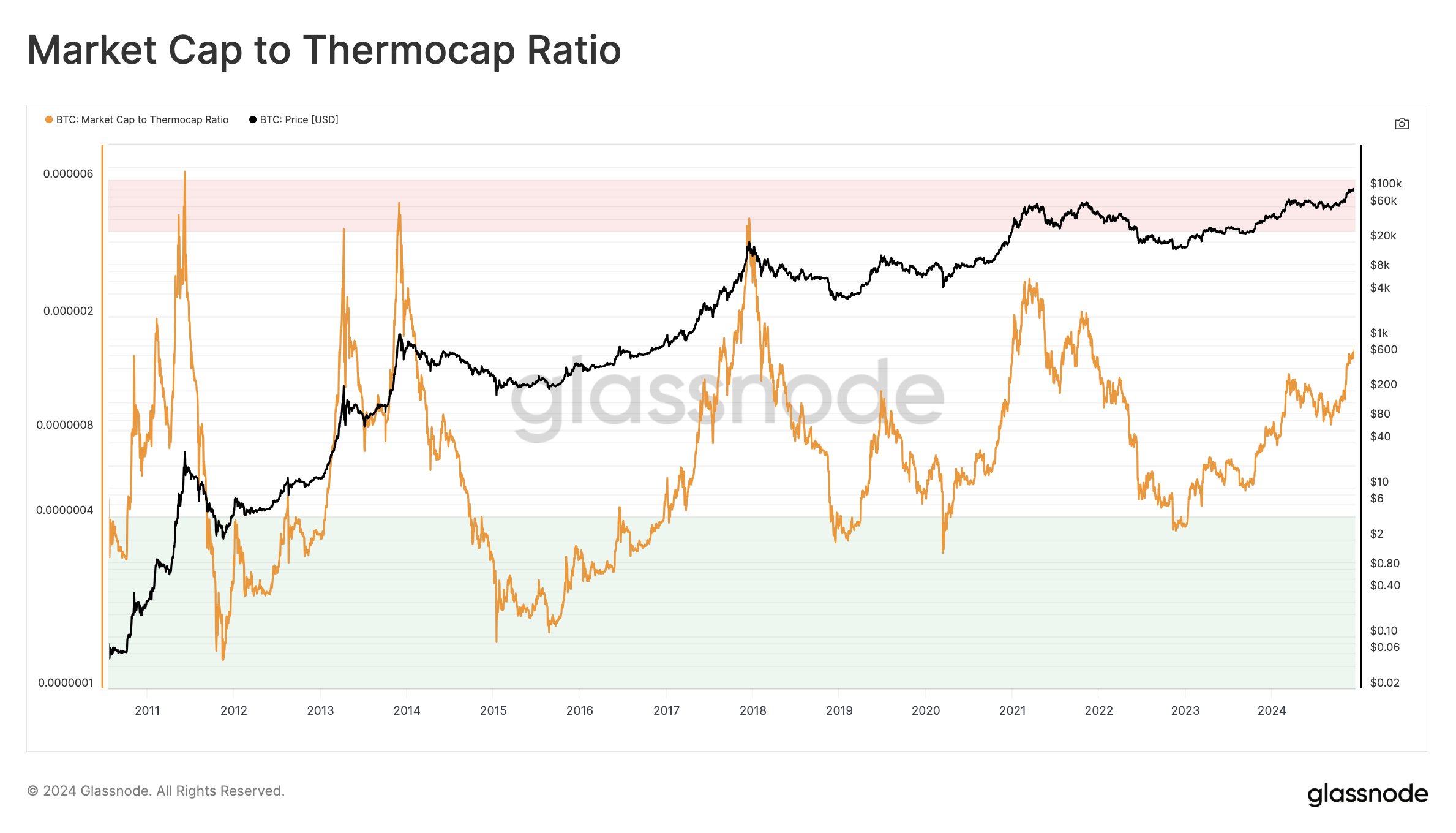
6/ Thermocap Multiple (32-64x): Historically, Bitcoin has peaked at approximately 32-64x Thermocap. “We are at the bottom of that range,” Schultze-Kraft said. Hitting the upper range in today’s environment would put Bitcoin’s market capitalization just over $4 trillion. Given that the current market capitalization ($1.924 trillion) is much lower, this suggests the potential for significant growth if historical patterns continue.
7/ Trader Tool (2-Year SMA x5): The Trader Tool uses a 2-year Straightforward Moving Average (SMA) of price and 5 times that SMA to signal potential high zones. “Which is $230,000 today,” Schultze-Kraft noted. Since Bitcoin’s current price is well below this level, the indicator has not yet shown a clear upper signal.
8/ Bitcoin Price Temperature (BPT6): This model uses deviations from the 4-year moving average to capture cyclical price extremes. Historically, BPT6 has been reached during previous bull markets and this range currently stands at $151,000. With Bitcoin trading at $98,000, the market is still brief of levels previously associated with peak overheating.
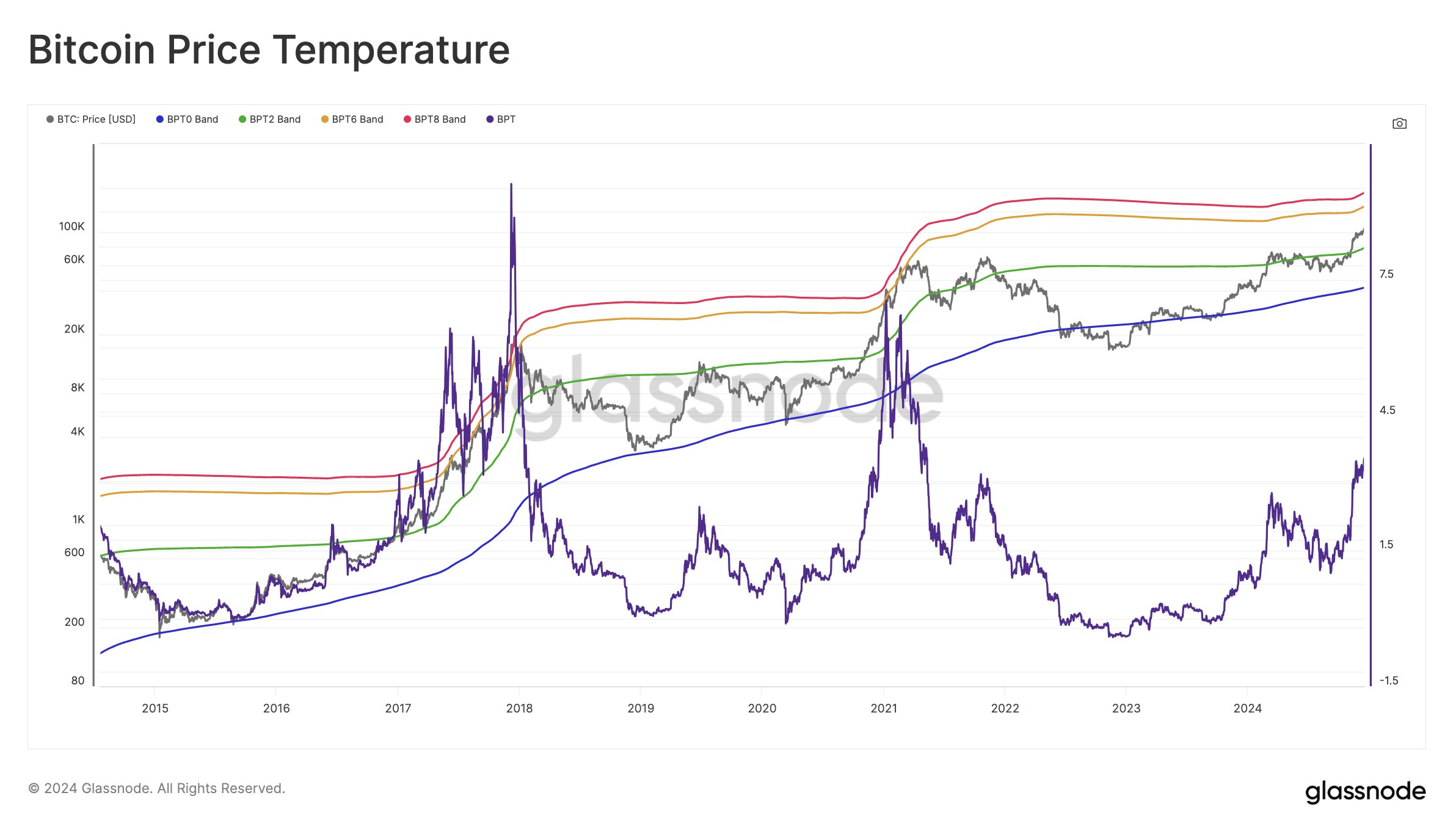
9/ True Market Average and AVIV: True Market Average is an alternative cost-based model. Its equivalent MVRV, known as AVIV, measures how far the market deviates from this average. Historically, peaks have been greater than 3 standard deviations. Today’s equivalent “is values above ~2.3”, while the current reading is 1.7. “Possibility for growth,” Schultze-Kraft said, suggesting that the market has not yet reached historic extremes by this metric.
10/ Low/Mid/Upper Cap Models (Delta Cap Derivatives): These models, based on the Delta Cap metric, have historically exhibited reduced values in the 2021 cycle, never achieving “upper cap”. Schultze-Kraft recommends caution in their interpretation due to changing market structures. Currently, the mid-cap level is around $4 trillion, which is roughly double the current level. If the market had followed previous patterns, it would have allowed for a significant rally before reaching levels typical of previous highs.
11/ Days of Value Destroyed (VDDM): This metric measures the spending behavior of long-held coins relative to the annual average. Historically, extreme values above 2.9 have indicated that older coins are hitting the market tough, often slow in a bull market. It is currently 2.2, but it is not yet an extreme level. “Upside opportunity,” Schultze-Kraft noted, suggesting that not all long-term stock holders have fully capitulated to profit-taking.
12/ Mayer Multiple: The Mayer Multiple compares the price to the 200-day SMA. Overbought conditions in previous cycles have leveled out above 2.4. Currently, a Mayer multiple above 2.4 equates to a price of approximately $167,000. For Bitcoin below $100,000, this threshold remains distant.
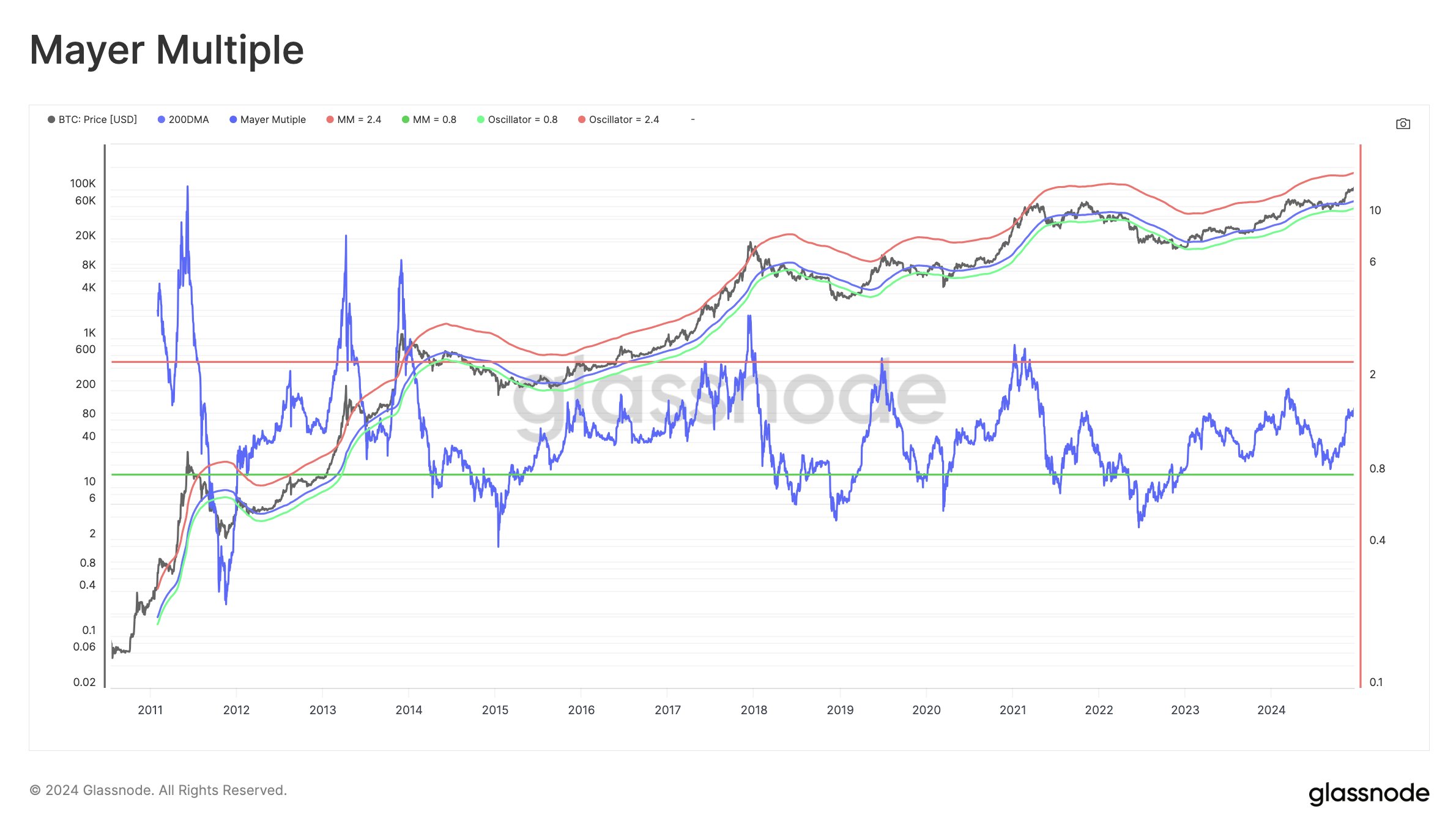
13/ Cycle Extremes Oscillator Chart: This composite uses multiple binary indicators (MVRV, aSOPR, Puell Multiple, Reserve Risk) to signal cycle extremes. “Currently 2/4 is on,” meaning only half of the monitored conditions for an overheated market are met. The previous peaks were aligned with the full set of signals triggered. Therefore, the chart suggests that the cycle has not yet reached its full peak intensity.
14/ Pi Cycle Top Indicator: A price-based signal that has historically identified cycle tops by comparing short-term and long-term moving averages. “Currently, the short moving average is well below the larger one ($74,000 vs. $129,000),” Schultze-Kraft said, pointing to the lack of a crossover and therefore no classic top signal.
15/ Seller Side Risk Ratio (LTH version): This ratio compares the total realized gains and losses to the realized market capitalization. High values correlate with volatile late-stage bull markets. “The interesting zone is 0.8% and above, while we are currently at 0.46% – there is room to grow,” Schultze-Kraft explained. This means that despite recent profit-taking, the market has not yet entered the zone of intense selling pressure often seen near highs.
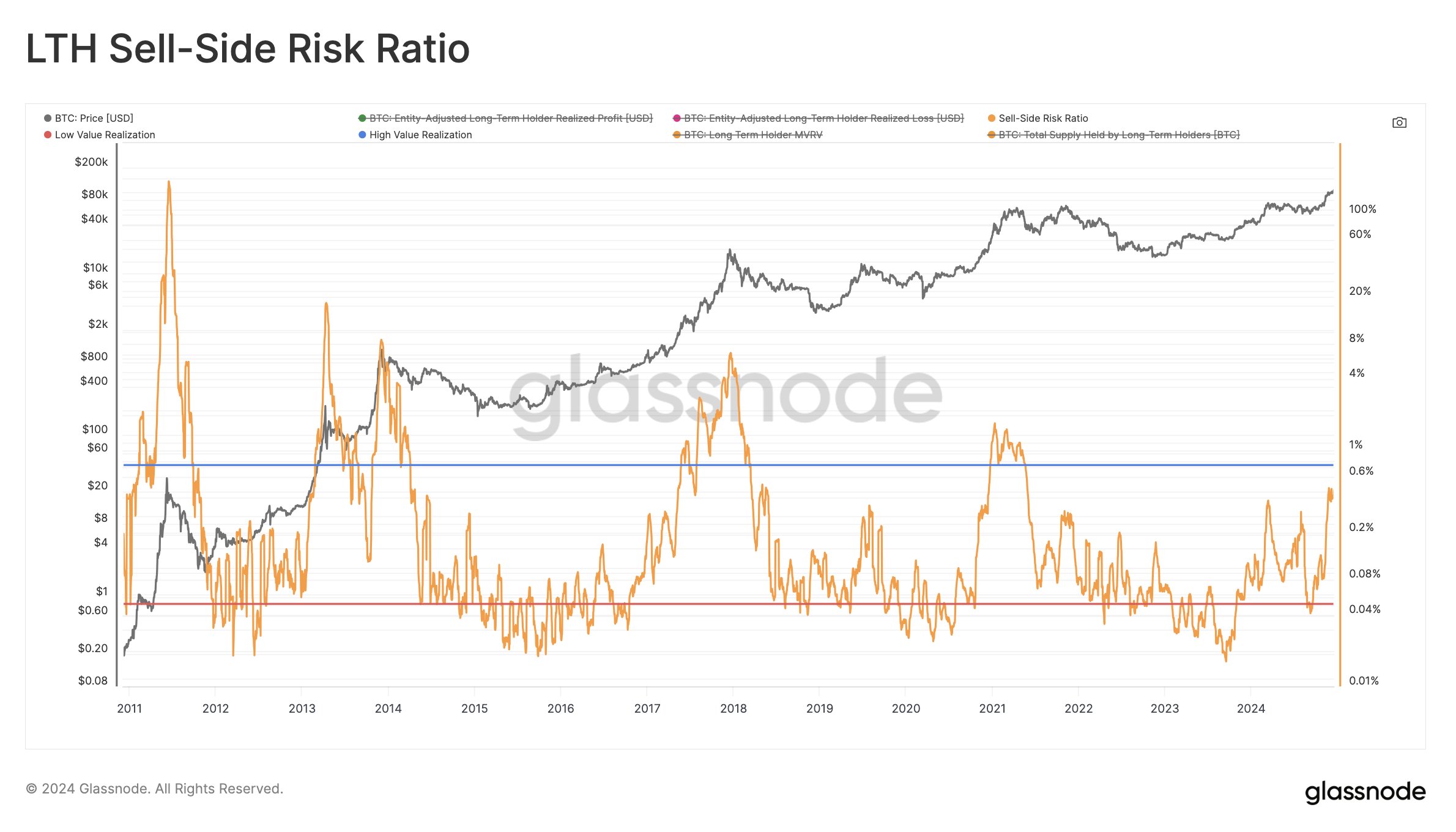
16/ LTH Inflation Rate: Schultze-Kraft highlighted the long-term homeowner inflation rate as “the most bearish chart I have seen to date.” While he didn’t provide specific targets or thresholds in this excerpt, he did say he was “shouting it with caution.” Investors should monitor this situation closely as it could signal increasing distributions from long-term holders or other structural difficulties.
17/ STH-SOPR (Compact Term Holder Spent Output Profit Ratio): This ratio measures the profit taking behavior of brief term holders. “Currently elevated, but not sustained,” Schultze-Kraft noted. In other words, while short-term participants are taking profits, the data does not yet show the type of sustained, aggressive profit-taking typical of market tops.
18/ SLRV Ribbons: These ribbons track trends in short- and long-term realized value. Historically, when both moving averages peak and cross, it marks a turning point in the market. “Both moving averages are still trending up, becoming bearish only at rounded tops and crosses. “There is no indication of a peak at this point,” Schultze-Kraft said.
Overall, Schultze-Kraft stressed that these indicators should not be used alone. “Never rely on single data points – confluence is your friend,” he advised. He acknowledged that this is an incomplete list and that the evolving Bitcoin ecosystem – now with ETFs, regulatory clarity, institutional adoption and geopolitical factors – could make historical comparisons less reliable. “This cycle may look completely different, but this is all we have (historical),” he concluded.
While numerous indicators show the Bitcoin market moving into more euphoric and profitable territory, few have reached the historical extremes that marked the highs of previous cycles. Metrics such as MVRV, profitability ratios, thermal indices and various price-based models generally suggest “room for growth,” although at least one – the LTH inflation rate – strikes a note of caution. Some composites are only partially triggered, while classic top signals such as Pi Cycle Top remain inactive.
At the time of publication, the price of BTC was $96,037.
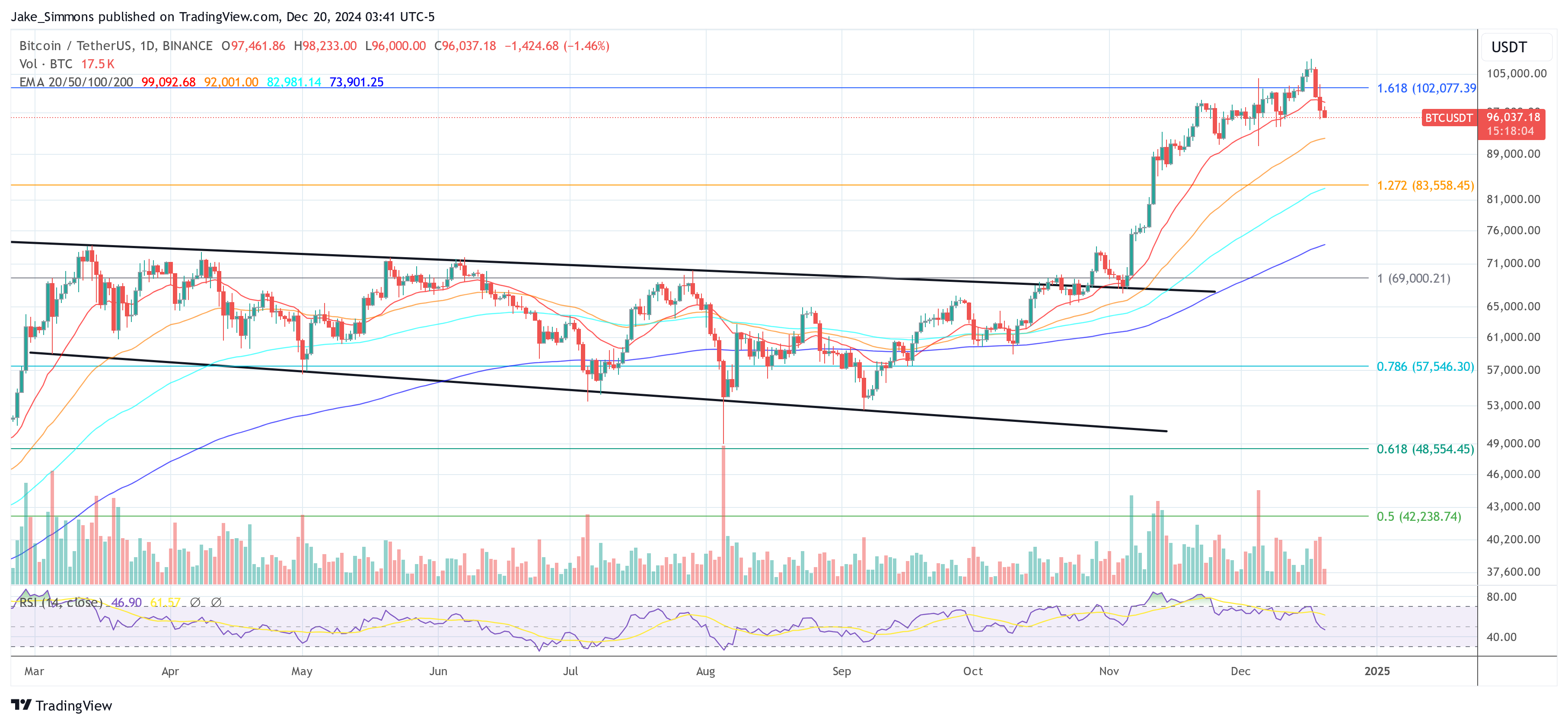
Featured image created with DALL.E, chart from TradingView.com
